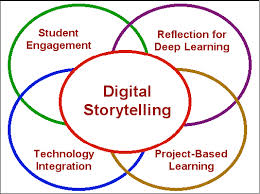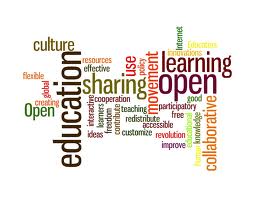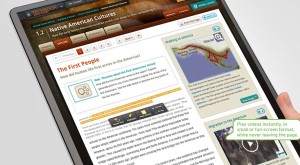Digital Curriculum Content Development
It has long been a concern with progressive educators that the cause of student failure is disenfranchisement more commonly known as boredom. In order to keep the K-12 student engaged their curriculum needs to be rigorous to be challenging but not to the point which causes students to lose interest. This is why a curriculum entertainment element is so important. It’s what helps make learning fun and not a burden. The theoretical framework of curriculum development is best obtained through a system of classifying the goals of the educational process, since educational objectives provide the basis for building curricula and tests and represent the starting point for much of our educational research.
i-pel will be developing progressive Integrated Digital Curriculum content for contemporary K-12 online learning. Because technology has advanced the K-12 student’s knowledge and awareness past existing curriculums, i-pel intends to utilize the most advanced and current pedagogical developments in constructing eLearning environments. Although both rigorous and challenging, i-pel curriculum will be augmented with original or the latest interactive and media-savvy content which can be updated on literally a daily basis and can even up dated by the students themselves.
existing curriculums, i-pel intends to utilize the most advanced and current pedagogical developments in constructing eLearning environments. Although both rigorous and challenging, i-pel curriculum will be augmented with original or the latest interactive and media-savvy content which can be updated on literally a daily basis and can even up dated by the students themselves.
Courses in core academic subjects, as well as, world languages, electives, honors, and advanced placements will be our primary focus. Courses will include integrated assessments and contain exempted pre-tests to allow students to skip content they have already learned and concentrate on the knowledge that needs work. Course-level assessments also will include tests for each course both in traditional and interactive formats.
i-pel also intends to develop k-12 technical and trade courses for the student who doesn’t necessarily want to pursue a college career beyond community college certificate programs. These courses will be more in line with the progressive “Project-Based Learning” model (see K-12 Teaching & Learning Platforms) now gaining K-12 traction as a teaching method.
In the Common Core Reading Standards English Language Arts (ELA) the large majority of the Literacy Standards for History/Social Studies, Science, and Technical Subjects require that aligned curricula include high-quality questions and tasks that are text dependent. Such questions should encourage students to “read like a detective” by prompting relevant and central inquiries into the meaning of the source material that can be answered only through close attention to the text. The Literacy Standards therefore require students to demonstrate their ability to follow the details of what is explicitly stated, make valid inferences that logically follow from what is stated, and draw knowledge from the text. Student background knowledge and experiences can illuminate the reading but should not replace attention to the text itself. Conforming curricula provides opportunities for students to build knowledge through close reading of a specific text or texts. Common Core Standards Initiative.
Integrated Digital Curricula
(The following is an abstract from “Games for a Digital Age: K-12 Market Map and Investment Analysis”)
As comprehensive core curricula move from print to digital, many supplemental materials including games are embedded as components. Digital curricula are designed for networked classrooms where every student has a computing device. These sophisticated curricula and connected technology elements are aligned to standards, may be personalized, generally allow searching for specific topics by level of difficulty, and form a foundation for the broader acceptance of learning games in the classroom.
Classroom Components – Courseware, Content and Creativity Tools
In a knowledge economy that values creativity and innovation, software and other tools that allow students and teachers to access and use content should be paired with software and other tools that allow students to create and share content that they develop. Providing students and teachers with the ability to create and control their own content has been effective in increasing student achievement, teacher efficacy and pride in student work.
Digital Textbooks
Digital textbooks offer various interactive functions and provide the learner with a combination of textbooks, reference books, workbooks, dictionaries and multimedia contents such as video clips, animations and virtual reality, both at school and at home without the constraints of time and space. Digital textbooks can save on costs over the long term. Example: At several high schools in Michigan, teams of high school students with a teacher mentor constructed a web-based digital storybook lesson utilizing Michigan’s Educational Technology Standards. The teams researched various technologies to construct digital studios and then created digital storybooks. Once completed, the teams shared their productions with the elementary schools, providing another technology resource for the district to use (Fox, C., et al. (2009) pg.4).
Educational Software and Subscriptions
Educational software products and subscriptions can engage students, promote self-directed learning and expand learning beyond the classroom and hours of the school day. For example, the Language Instruction Network Knowledge (LINK) project at Mullan Trail, Ponderosa, Prairie View, and Seltice Elementary Schools in Idaho utilizes language software to provide students with access to relevant technology in the classroom and at home. The LINK project provides opportunities to engage, teach, and practice language usage skills, develop mastery with language concepts and enhance mastery of language usage and the writing process. (http://files.eric.ed.gov/fulltext/ED537540.pdf)
Digital Teaching Platforms
Digital teaching platforms are designed to operate in one-to-one classrooms, deliver a personalized curriculum to every student, and provide support for the teacher to manage all classroom activities. They contain open-ended explorations, practice environments, games, videos and other digital learning objects.
An example or core curriculum digital products are the Discovery Education Science Techbooks (see: K-12 For-Profit Online Schools) for elementary and middle school science that have been adopted in a number of states including Florida, Texas, and Oregon. A “techbook” contains a large collection of online learning tools and games ranging from videos, quizzes, animations, simulations, and puzzles, all aligned to standards, made completely searchable, and organized into a complete curriculum.
Curriculum Basics
Focusing on the use of scenarios and real-world situations to enhance the eLearning experience, i-pel’s online curriculum will use the traditional “Bloom’s Revised Taxonomy” (see: K-12 Education) of “Problem-Based Learning,” “Inquiry-Based Learning” and the more progressive, team dynamic, “Project-Based Learning” models and will augment these learning platforms with an Entertainment-Based Learning supplement.
Bloom’s Taxonomy divides educational objectives into the three domains of “cognitive,” “affective” and “psychomotor” sometimes loosely described as “Knowing/head,” “Feeling/heart,” and “Doing/hands.” Educational psychology aids learning structures in the realms of “behavior,” “cognition,” and “construction.” Project-based learning is centered on the idea of the student “creating something” that they have just learned in an individual or team collaboration. i-pel intends to enhances these two education platforms with a progressive entertainment element. Curriculum development will also be influenced by the contemporary progressive education concepts of the “Blended Learning” or the “flipped classroom” model and the North Carolina State University’s Friday Institute’s “FIZZ Concept of Inclusive Learning (see: Personalized/Blended-based Learning)![bloom-interactive-pyramid-12ta9bt[1]](http://i-pel.org/wp-content/uploads/2014/02/bloom-interactive-pyramid-12ta9bt11-300x191.jpg)
At every grade students will be engaged in higher-level thinking through decision-making tasks such as evaluating alternatives to select the best course of action. Problem solving has long been used in teaching math but it can also be used in teaching grammar, English and science through “error analysis.” i-pel will use various levels of cognitive complexity to embed real-world elements of humor (stress release), mystery (curiosity) and amazement (imagination) in the entertainment supplements.
The i.-el process of designing curriculum will work backwards from standards to assessments to the design of the learning experiences. The curriculum document will be developed, used, refined and improved based on performance data from student work and feedback from faculty and students. Because of the eBook element a curriculum documents can always be a “work in progress.” The written and visual curriculum will be revised on an ongoing basis as a result of faculty, student, and parent feedback. All content will be aligned to state standards, can be aligned to custom curriculum, and will support classroom instruction regardless of the technology platform (see: K-12 Curriculum).
i-pel Entertainment Engagement Supplements
i-pel was formed to research and develop integrated engagement supported k-12 academic and tech/trade curriculum. Based on the premise that the immersion of technology into current k-12 curriculum has just begun, i-pel looks to combine curriculum standards with a combined or stand-alone engagement element. The engagement elements include not only chapter based engagement paper and video games but also a variety of fictitious story elements and music lyric text which can be performed in class (see Entertainment-based eLearning/articles – “A Hip Hop Experiment”).
curriculum has just begun, i-pel looks to combine curriculum standards with a combined or stand-alone engagement element. The engagement elements include not only chapter based engagement paper and video games but also a variety of fictitious story elements and music lyric text which can be performed in class (see Entertainment-based eLearning/articles – “A Hip Hop Experiment”).
Current K-12 curriculum is examined to see which programs are suitable for modification to essentialistic and progressive eLearning programs which can contain engagement elements such as short and long situation comedies or dramatic episodes. For example, our middle school computer science curriculum is set at the fictional “Whatzit Academy” where virtual field trips are set within each chapter’s lecture. Other ideas include a high school geometry course set in a fictional building construction company.
 We are looking for ways to teach our least teachable students. That doesn’t mean we should not consider the A/B students most of whom are linguistic and logical learners. Just because they are doing well doesn’t mean they don’t need guidance. These students will be good students learning from almost any format but we believe that because of the engagement element embedded in each program, the program’s “fun” aspects can help reduce stress which can be found in a great many over-achieving students.
We are looking for ways to teach our least teachable students. That doesn’t mean we should not consider the A/B students most of whom are linguistic and logical learners. Just because they are doing well doesn’t mean they don’t need guidance. These students will be good students learning from almost any format but we believe that because of the engagement element embedded in each program, the program’s “fun” aspects can help reduce stress which can be found in a great many over-achieving students.
Although the use of educational games (see: eLearning & eLearning Games) will be an important part of i-pel curriculum the educational engagement episodic element is a relatively new concept in education. Educators have long used storytelling such as the morality play (see: Entertainment-based eLearning) to educate. Digital Storytelling (DST) (see: eLearning Digital Storytelling) refers to a short form of digital film-making that allows students to share aspects of their learning. DST is now being used more frequently in place of “lecture” type teaching. i-pel’s episodic element will be a type of fictional DST.
i-pel curriculum will be designed to increase academic achievement by breaking down learning barrier which are created by student stress, anxiety and the feeling of not belonging. The focus will be on visual learning through real-life situations to which students can relate. Just as the film industry has for generations combined education and entertainment to create a memorable experience, i-pel curriculum will combine education and entertainment to create knowledge experiences which will be retained by the student for a life time. Examples of this concept would be “Bill Nye the Science Guy” which teaches various aspects of science through the antics of “over the top” Bill Nye and the “iCarly” after school TV show which teaches some of the basics of computer networking.
belonging. The focus will be on visual learning through real-life situations to which students can relate. Just as the film industry has for generations combined education and entertainment to create a memorable experience, i-pel curriculum will combine education and entertainment to create knowledge experiences which will be retained by the student for a life time. Examples of this concept would be “Bill Nye the Science Guy” which teaches various aspects of science through the antics of “over the top” Bill Nye and the “iCarly” after school TV show which teaches some of the basics of computer networking.
Be they an educational game, pre-testing game, episodic element, animation or graphic literature element all i-pel k-12 curriculum’s will have a corresponding entertainment engagement aspect to each course chapter. With the courses that contain an episodic element the actual course chapter lectures will be embedded in each episode and will be incorporated into the plot of the actual episode. The student will be able to watch (and interactively participate) after school or at home. The episodes will be able to be used to do homework and can be watched instead of the non-educational TV most students watch.
“According to the University of Michigan Health System more than 70 percent of children ages 8 to 18 have TVs in their bedrooms. More than 35 percent have cable or satellite-TV access. Criticism of the effects of TV on children is well documented but with parental guidance, TV can also be a positive influence in a child’s life.
In 2009, the Nielsen Co. reported that children’s television viewing had reached an eight-year high. Children ages 2 to 5 watched TV for more than 32 hours a week (4.5 hours a day). Kids ages 6 to 8 spent 28 hours per week (4 hours per day) in front of the TV, less time because most likely because they were in school, explains Nielsen. The Kaiser Family Foundation also conducted research on the media habits of children ages 8 to 18. Kaiser found that on average, this age group spends 4½ hours each day watching TV in various forms, including on their mobile phones and the Internet. This is 77 minutes more per day than they did five years ago. Livestrong.com
Since the most immediate experience of the K-12 student is at their schools most all i-pel episodic elements will originate at the fictitious K-12 school, the “Whatzit Academy.” Elementary math courses may be embedded in “fund raisers” such as bake sales and charity drives and a fictitious family grocery store. Middle school English may be taught through the school newspaper and computer science may be taught through virtual “field trips.” High school math may be taught through the construction of a new on campus science building and civics may be taught through the writing of a school constitution.
Open Education Resources
One of the defining elements of i.pel curriculum will be the use of Open Education Resources (OER). The use of the World Wide Web, with the hundreds of potential resources to choose from for any given lesson, can be daunting for a teacher. The OER aspect of i.pel digital content is intended guide the educator to just the right resource, lesson, or chapter as they need it. I.pel will continually scour the web for quality OER content to augment i.pel curriculum. (See: Open Education Resources). Although i.pel will design and develop original education entertainment supplements such as computer games, if we identify an educational entertainment supplement we feel is superior from an OER source we will not hesitate to incorporate that element into an i.pel curriculum.


Recent Comments